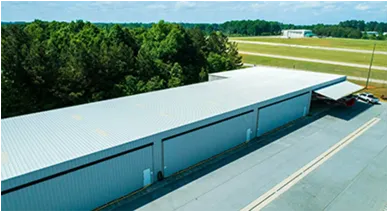- Afrikaans
- Albanian
- Amharic
- Arabic
- Armenian
- Azerbaijani
- Basque
- Belarusian
- Bengali
- Bosnian
- Bulgarian
- Catalan
- Cebuano
- Corsican
- Croatian
- Czech
- Danish
- Dutch
- English
- Esperanto
- Estonian
- Finnish
- French
- Frisian
- Galician
- Georgian
- German
- Greek
- Gujarati
- Haitian Creole
- hausa
- hawaiian
- Hebrew
- Hindi
- Miao
- Hungarian
- Icelandic
- igbo
- Indonesian
- irish
- Italian
- Japanese
- Javanese
- Kannada
- kazakh
- Khmer
- Rwandese
- Korean
- Kurdish
- Kyrgyz
- Lao
- Latin
- Latvian
- Lithuanian
- Luxembourgish
- Macedonian
- Malgashi
- Malay
- Malayalam
- Maltese
- Maori
- Marathi
- Mongolian
- Myanmar
- Nepali
- Norwegian
- Norwegian
- Occitan
- Pashto
- Persian
- Polish
- Portuguese
- Punjabi
- Romanian
- Russian
- Samoan
- Scottish Gaelic
- Serbian
- Sesotho
- Shona
- Sindhi
- Sinhala
- Slovak
- Slovenian
- Somali
- Spanish
- Sundanese
- Swahili
- Swedish
- Tagalog
- Tajik
- Tamil
- Tatar
- Telugu
- Thai
- Turkish
- Turkmen
- Ukrainian
- Urdu
- Uighur
- Uzbek
- Vietnamese
- Welsh
- Bantu
- Yiddish
- Yoruba
- Zulu
दिसम्बर . 25, 2024 23:08 Back to list
Two-Storey Steel Frame Buildings An Overview
In the modern architectural landscape, the two-storey steel frame building has emerged as a popular choice for various types of structures, including residential homes, commercial enterprises, and industrial facilities. The use of steel frames offers a myriad of advantages, including strength, durability, and design flexibility. This article delves into the key features, benefits, and considerations associated with two-storey steel frame buildings.
Structural Integrity and Safety
One of the primary reasons for the popularity of steel frame construction is its structural integrity. Steel is a material known for its high strength-to-weight ratio, making it capable of supporting considerable loads while maintaining a lightweight profile. In a two-storey structure, this characteristic is particularly advantageous as it allows for larger open spaces within the floors without the need for excessive columns or load-bearing walls. This design flexibility can lead to innovative architectural solutions and enhances the building's usability.
Additionally, steel frames offer superior resistance to various forces such as earthquakes, high winds, and other environmental stresses compared to traditional materials like wood or concrete. This resiliency ensures the safety of occupants and can lead to lower insurance premiums, making steel-structured buildings a pragmatic choice.
Design Flexibility
Another compelling aspect of two-storey steel frame buildings is the adaptability in design. Steel construction allows architects to explore contemporary and creative designs that might be difficult to achieve with conventional methods. The slim profile of steel beams can lead to increased ceiling heights and enhanced natural light infiltration through larger windows. Moreover, the use of steel allows for a variety of exterior finishes—from glass facades to traditional cladding—this enables the building to blend seamlessly into various environments, whether urban, suburban, or rural.
Quick Construction Times
Time is often a critical factor in construction projects, and the prefabrication of steel components can drastically reduce the time it takes to complete a two-storey building. Many steel frame components can be manufactured off-site and then transported to the construction site for assembly. This not only speeds up the construction process but also minimizes disruptions caused by weather conditions.
two storey steel frame building

A quicker build time can result in lower labor costs and earlier occupancy, which can be a significant advantage for commercial projects. These efficiencies make steel frame buildings an appealing choice for developers and investors looking to maximize returns on their investments.
Sustainability and Environmental Impact
In an era increasingly focused on sustainability, steel frame buildings have notable eco-friendly advantages. Steel is 100% recyclable, meaning that steel structures can be dismantled and their materials reused without loss of quality. This lifecycle sustainability factor is essential for meeting modern building codes and environmental standards.
Moreover, energy-efficient insulation can be easily integrated into a steel frame building, reducing energy consumption and costs associated with heating and cooling. The longevity of steel also means fewer resources are needed for maintenance and repairs over time compared to other materials.
Considerations and Challenges
Despite the numerous benefits, there are also challenges associated with two-storey steel frame buildings. One key issue is thermal conductivity; steel can conduct heat, which may lead to increased energy costs if not adequately insulated. Additionally, the initial cost of steel may be higher compared to traditional materials, though this can be offset by long-term savings in maintenance and energy efficiency.
Furthermore, designing for fire safety is paramount; while steel is inherently non-combustible, it can lose strength at high temperatures. Proper fire-proofing measures must be implemented to ensure compliance with local building codes and regulations.
Conclusion
In summary, two-storey steel frame buildings represent a modern solution that balances aesthetics, functionality, and sustainability. With their robust structural performance, design flexibility, and quick construction times, these buildings are well-suited for various applications. While challenges exist, the benefits often outweigh the drawbacks, positioning steel frame construction as an attractive alternative for those looking to invest in a quality structure that stands the test of time. As architectural practices and technologies continue to evolve, the future of steel frame buildings looks bright, promising innovative designs that will shape our built environment.
-
Cold Formed Steel Residential Framing
NewsMay.21,2025
-
Innovative Steel Structure Building Solutions
NewsMay.19,2025
-
Innovative Prefab Metal Shed Solutions
NewsMay.19,2025
-
Durable Steel Horse Shelter Solutions
NewsMay.19,2025
-
Durable Metal Shed Solutions
NewsMay.19,2025
-
Durable Big Metal Shed Solutions
NewsMay.19,2025
Products categories
Our Latest News
We have a professional design team and an excellent production and construction team.












